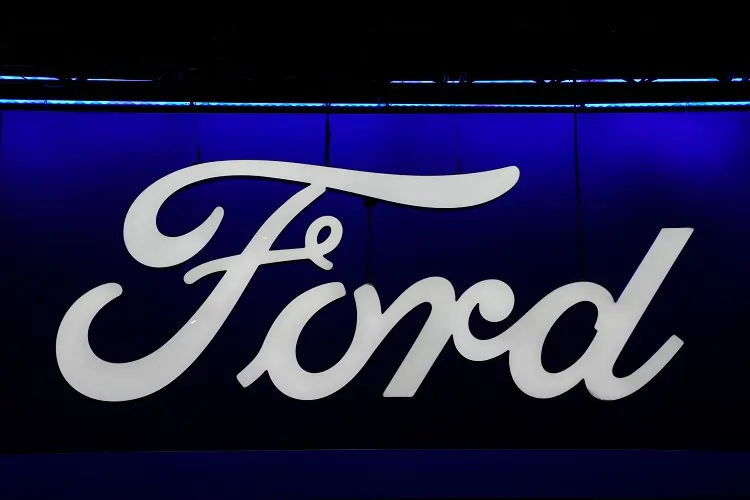
By Nora Eckert, Nathan Gomes
(Reuters) -Ford Motor reported a dip in second-quarter adjusted profit on Wednesday as the automaker continues to battle costly quality issues and an EV business that is weighing on its bottom line, sending shares tumbling 11% in after-hours trading.
The Detroit automaker earned an adjusted profit of 47 cents per share, significantly missing analysts’ expectations of 68 cents, according to LSEG data.
Executives emphasized that Ford is continuing to root out structural inefficiencies and transform its gas-engine and EV operations, but Wall Street was not convinced.
“You said that Ford’s a different company from what it was three years ago, but the stock market really doesn’t seem to agree with you at all on that,” Morgan Stanley analyst Adam Jonas said to Ford CEO Jim Farley on the company’s conference call.
The Ford chief has made fixing the automaker’s quality problems a priority since he took the helm in October 2020. Since then, Ford has hired a new executive director of quality and transformed some of its production practices to avoid errors, but has still topped the industry in number of recalls.
Warranty expenses went up $800 million in the second quarter compared with the previous quarter, Ford Finance Chief John Lawler told reporters. Lawler said most of these warranty expenses were related to older vehicles launched in 2021 or earlier. He said field service actions in the quarter were a one-time cost increase for the older vehicles and Ford expects the second half of the year to match its warranty cost expectations.
The carmaker maintained its projected annual guidance of $10 billion to $12 billion in earnings before interest and taxes.
‘GROWING PAINS’
“We can’t read this quarter as that the year is coming off tracks. It’s not,” said Lawler. “We’re very confident in where we’re at this year. The plan’s working. In this transformation, it’s not going to be a straight line up. We’re going to have bumps as we’re reshaping things.”
Legacy automakers have scaled down their EV ambitions amid easing demand, a shift to hybrids and stiff competition from Tesla and Chinese EV makers in global markets.
Earlier this month, Ford shifted plans for a Canadian assembly plant that was expected to build a three-row EV, instead saying it would produce Ford’s flagship F-150 pickups. Farley said the company was struggling to meet soaring demand for the gas guzzlers.
“Overall, the EV journey has been humbling, but it has forced us to get even more fit as a company, including applying it to our (traditional gas-engine) business, and that will pay off in the long run,” said Farley. “The remaking of Ford is not without growing pains.”
On the battery-powered front, Farley is focusing the company’s efforts on expanding its global hybrid portfolio by 40% this year as well as developing a platform for a lineup of affordable, smaller electric vehicles, which Ford is doing out of its California-based “skunk works” team.
Ford recorded a $1.1 billion operating loss for its electric-vehicle and software division in the second quarter, adding to its $1.3 billion loss from the first quarter. Executives expect this section of the company to sustain a pretax loss of up to $5.5 billion for the year.
‘LOSING PATIENCE’
The company’s repeated messaging on weeding out structural costs is falling flat with some on Wall Street.
“Investors may be losing patience with the story despite management’s insistence that it is laying the foundation for profitable, long-term growth,” said CFRA Research analyst Garrett Nelson in a note.
Meanwhile, Ford’s commercial vehicle business, which Farley has called its “secret weapon,” continued to drive the company’s overall profit. The segment posted an operating profit of $2.6 billion for the quarter and operating margins of 15%.
Crosstown rival General Motors reported second-quarter profit and revenue on Tuesday that beat Wall Street’s expectations, buoyed by strong pricing and demand for gas-powered trucks. The company raised its annual forecast for the second time this year. Still, its stock slipped about 6% on Tuesday, on analysts’ concerns that the auto industry’s resiliency may not hold for much longer.
(Reporting by Nathan Gomes in Bengaluru and Nora Eckert in Detroit, additional reporting by Akash Sriram in BengaluruEditing by Sriraj Kalluvila, Ben Klayman and Matthew Lewis)


